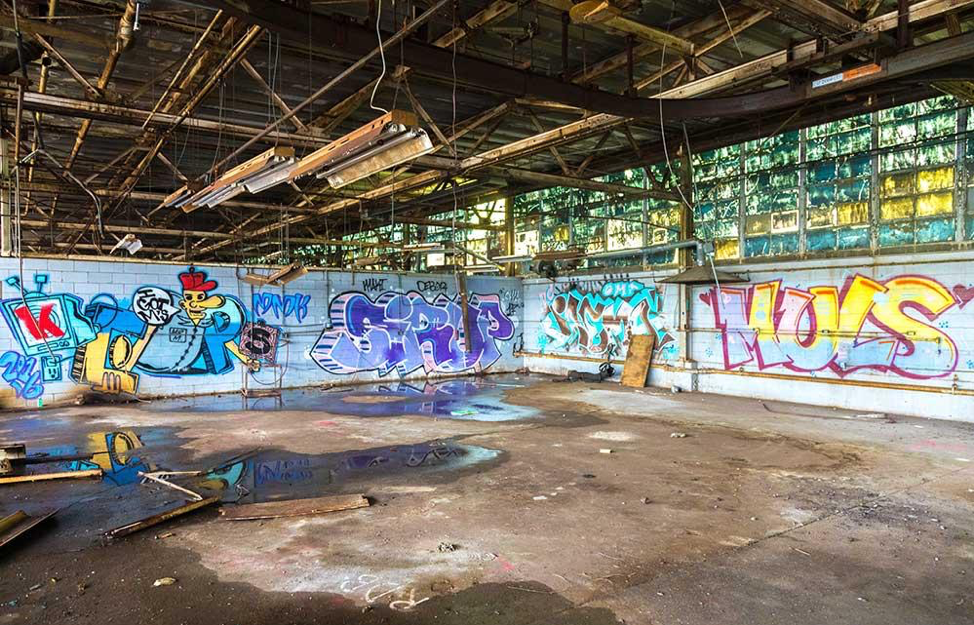Finding Brownfields funding and securing it can be challenging for municipalities. When applying for EPA Brownfields grants, there’s about a 65% possibility that your request could be denied losing all hope for EPA funding for the coming year. So, whether you’re replacing or supplementing, your EPA grant funding sources, here are four other financing resources.

Municipalities across the country have abandoned industrial and commercial properties—from old manufacturing platers, metal platers, and oil distributors, to dry cleaners, gas stations, and manufacturers—that are affected by environmental contamination. Redeveloping blighted, underutilized, and contaminated properties, while protecting public health and the environment, require a strategic and well-designed plan to ensure the property turns back into a productive piece of the community and an improved tax- base for your city. And to do this, you need funding.
Brownfields Financing Sources
So, you didn’t receive the EPA Brownfields grant that you had hoped to receive for your city. Luckily, there are other funding opportunities for financing your environmental investigation and cleanup. These opportunities can be made available to municipalities and developers through economic development incentives and insurance claim settlements.

What Are the Four Types of Brownfields Funding?
Outside of the EPA’s Brownfields grant program, municipalities do have alternative funding options available, and with the right partners and strategies in place, those options are readily accessible. The top four options include:
1. Confidential Insurance Archeology
Confidential Insurance Archeology® searches for old CGL insurance policies that can be used to pay for environmental investigation, remediation, and legal fees. Insurance archeology restores financial viability to contaminated properties and gives cities an opportunity to fund the environmental cleanup necessary for their Brownfield sites.
2. Potentially Responsible Party Search
A Potentially Responsible Party (PRP) search can identify and locate former property owners and site operators along with the documentation needed to hold them accountable for a potential contribution to the environmental contamination that links them to the site.
3. Municipal Development Incentives
Municipal development incentives are available from local or state sources and can assist with the cost of environmental and infrastructure work. Examples include:
- The Industrial Grant Fund (IDGF) encourages municipalities and other eligible groups to redevelop properties by providing assistance to fund infrastructure enhancements including sidewalks, airport facilities, rail spurs, fiber-optic lines, etc.
- The Community Revitalization Enhancement District (CReED) credit allows applicants to redevelop or rehabilitate properties within a CReED, and includes tax credits for costs incurred during environmental remediation activities.
- The Industrial Recovery Tax Credit (Dino) credit allows applicants to receive tax credits on expenditures related to the rehabilitation of industrial properties that are at least 100,000 sq.ft. in size. Eligible costs include property acquisition, environmental remediation, and other hard costs.
- The Tax Increment Financing (TIF) is available for local governments to help finance both new development and the development of blighted areas.
4. State Trust Funds
State trust funds are available for sites ranging from underground storage tanks left behind at old gas stations, to PCE (Perc) or TCE remediation for dry cleaning solvents used at old dry cleaning businesses. If your city has old gas stations or dry cleaning sites with contamination, there may funding opportunities that can be tapped into to clean up these sites. Read more about state trust funds for dry cleaners.
If you’ve already completed a Brownfields redevelopment project, you can try to use a cost-recovery claim to be reimbursed for costs already incurred. While there is no guarantee you will recover 100% of what you spent on the cleanup, you should be able to recover some of your costs if you can locate and prove that there were policies in place that would defend you against environmental liability. Each case is specific and depends on each state’s case law to determine how your insurance policies would apply.
How Do I Use These Other Funding Resources?
If you didn’t receive EPA Brownfields grant funding, or only received enough funds to pay for a portion of your Brownfields projects, then you should:
- Find an environmental consultant that can locate all available funding options for your Brownfields property, including your historical insurance policies.
The bottom line is there are billions of dollars in unclaimed assets available to parties looking to defend environmental claims. If you are a municipality or business needing to manage your historical, current, or future environmental liabilities, you can use these insurance assets to evaluate and clean up your Brownfields site. - Find an environmental consultant that can interface with your insurance carriers on your behalf.
For over 25 years, EnviroForensics has been working with insurance carriers to unlock previously untapped policy coverage. We fight for our clients’ funding needs and have worked with companies and organizations ranging from mom and pop businesses to Fortune 100 companies. - Find an experienced environmental consultant that can take care of your Brownfield sites from beginning to end.
From site investigation and cleanup to litigation support and site closure, EnviroForensics will handle your environmental liability.

EnviroForensics helps community leaders convert blighted and contaminated properties into valuable community assets that are ready for redevelopment. From due diligence to redevelopment, EnviroForensics is invested in revitalizing properties to better serve the surrounding communities. We manage all aspects of the environmental cleanup to ensure your redevelopment goals are reached. Our specialty services provide a less costly way to redevelop Brownfields.
Contact us today to begin your path to redevelopment with alternative funding options



